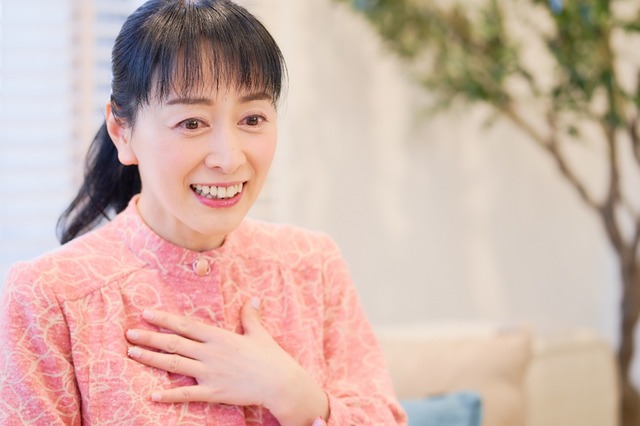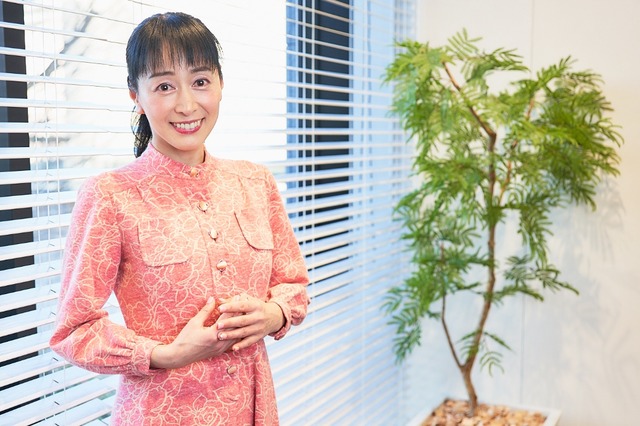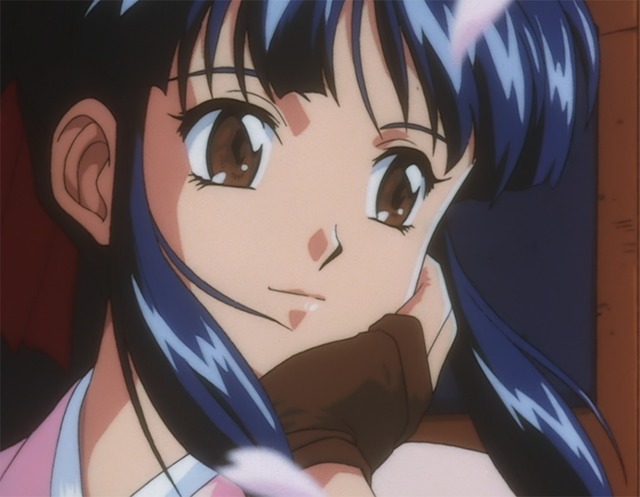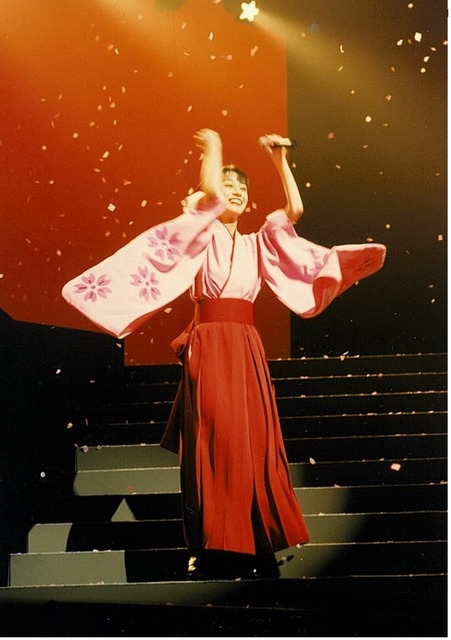The 2.5D (“two-and-a-half-dimensional”) culture is becoming popular through the stage adaptations of many titles such as, “Touken Ranbu” and “Shoujo Kageki Revue Starlight ” at the top of the list.
There are also several epoch-making titles in its history, including “The Prince of Tennis” and “Yowamushi Pedal”.
The stage “Sakura Taisen Kayou Show”, that is derived from the popular game “Sakura Wars”, is one of them.
Voice actors who dubbed the characters in the game have been dressed in the same costumes as the characters while performing wonderful songs and dancing on a real stage.
Started in 1997, “Kayou Show” attracted many fans over the years, and is often referred to as one of the origins of the 2.5D, which is still popular nowadays.
The voice actress Yokoyama Chisa, who dubbed the heroine Shinguji Sakura in the “Sakura Wars” series, also gave a brilliant performance on the “Kayou Show”.
She started her career as a voice actor and later expanded her activities to the stage where she is still active today. She has become a great inspiration for youngers who aim to join 2.5D stages.
[Interview & Text: Maeda Hisashi / Photography: Ohara Souta]
■Can you tell us the reason why you decided to become a “2.5D voice actor”?
Yokoyama Chisa
Yokoyama studied at the Katsuta Voice Acting School (later renamed Katsuta Voice Acting Academy, which closed in 2015) in Takadanobaba, Tokyo, which offered courses taught by the famous voice actor Katsuta Hisashi, known for many characters roles such as Professor Ochanomizu in “Astro Boy”.
Yokoyama made her debut as a voice actress at the tender age of 17 by playing the character Nara Ferris in the OVA “Black Magic”, which is based on the original manga by Shirow Masamune.
The reason why she decided to become a voice actor was because of her admiration for a certain famous character.
“I watched the movie “Lupin III The Castle of Cagliostro” on TV by accident. I didn't consciously turn the channel on to see it, I was probably watching the nighttime broadcast and it just started.
I wasn't paying a lot of attention to it, but by the time the film was over, I was sitting upright in front of the TV and my eyes turned in the shape of hearts. I came to admire Lupin a lot when I was about in the eighth grade.
My parents told me that I could try anything I wanted to do when I was in high school, so I decided to study voice acting. If doing so, maybe I would be able to meet Lupin.
I didn't feel like I could make a performance in a real film. I imagined Lupin coming to greet me as I was Clarisse… it was a bit of an “itchy” feeling (laughs).
Before that, I hadn't watched many anime much and wasn't particularly fond of them. Rather I was an active child who was spending most of the time doing outdoor activities and physical training. Just a little after those days I got the anime “disease” (laughs)”.
■After making your debut at the age of 17, can you tell us about the skills you acquired as a voice actor on the field?
She made her debut at the age of 17 while still being in high school and having no experience as a child actor. At first glance, her career seemed to be off to a smooth start, but she had mixed feelings about it.
“When I saw the finished “Black Magic”, I was stunned to notice that, while my colleagues were true professionals, only my voice was mixed with that of an amateur.
The sound pressure of the voice and the quality of the performance were totally different. I felt like I was just saying the lines to synchronize the character's lips.
Unlike me, my colleagues were conscious of how to make their characters look attractive and the film interesting.
I thought that I had to pass the audition at all costs and learn more and more in the field. At the training school, I was taught a lot of important things, such as how to speak smoothly and how to prepare myself mentally as an actor. But that was just the basics.
I still remember that moment when I realized how much there is to learn about voice acting”.
■Studying abroad gave you an opportunity to open up and say, “There is nothing to be afraid of”. After that, you began to play the role of Arara Milk in “NG Knight Lamune & 40” and seemed to be gaining a foothold as a voice actor.
However, only in 1994, when you went to Australia to sort out your work situation, you felt that you had a firm sense of being a true voice actor.
“The reason I decided to study abroad was simply that I wanted to do something different from my routine life, spend more time as a high school student, and try to have a conversation with foreign people.
It wasn't something serious like, “I had doubts about the voice acting industry,” or “I felt insecure about my way of living” (laughs).
As a result, I ended up studying abroad for only 15 weeks, which is a pretty short period of time, because the new work of the series “Tenchi Muyo!” might be ahead of the original schedule, and there were also other work commitments.
But then I stepped away from my work, I took a step back and looked at myself, and I noticed something. Why was I so nervous and shriveled up in the studio…?
I didn't want to make the same mistake that I had experienced on my debut in such an important moment of my work, but I wondered if it was fun for the children to hear a nervous and trembling voice like mine.
After realizing that, I was able to open my mind to the idea that there is nothing to be afraid of. I was reborn. That's where I started to enjoy my work”.
■When you're not working as an actor, you are on a “road trip”.
This personal turning point coincided with the changing times. In the middle of the growing popularity of young female voice actors as idols, the so-called “third voice acting boom”, they have gained more media exposure as multi-talented people by appearing at events as cosplayers and joining talk sessions on Aniraji, which is similar to the way voice actors are nowadays.
Yokoyama, one of the stars, was running through this situation with aplomb.
“When I debuted, I wanted to be recognized as the voice actor Yokoyama Chisa as soon as possible.
As I mentioned earlier, I struggled to reach my true potential as a voice actor at the beginning. I had been working for many years in the submission section of the “Weekly Shonen Jump” magazine (“Jump Broadcasting Station”), and I was sad that some of my peers thought I was “different”.
I was told, “You're a talent, right, Chisa?”, even though I didn't want to be a talent. I only entered voice acting school because I wanted to be a voice actor, nothing more than that.
But as my work as a voice actor gradually took off, I came to feel that that was my “real path” and the other stuff, such as songs and events, was my “road trip”.
The road trip is fun, isn't it? I've come across some unexpected things. Even if I made some mistake, I would think, “This isn't my real job”.
So once I was able to do media mixes after studying abroad and establishing myself as a voice actor, my life started to be comfortable and fun.
■The secret story behind the birth of “Sakura Taisen Kayou Show”
Yokoyama is said to be one of the pioneers when it comes to cosplaying at events related to anime and video games.
“The reason I did it in the first place was that there were so many events that it was always difficult to choose the outfit suitable for each occasion. So, after thinking “Why don't try to dress up as a fictional character?”, I asked a friend of mine who is a good Western dressmaker to make me a very mini Japanese-style skirt with fluttering flares, like the one that Sasami wears in “Magical Girl Pretty Sammy”, and I put it on.
“Magical Girl Pretty Sammy”: Sasami's costume
I was a little nervous at first, but the fans were so happy with it that it made me feel good (laughs). That's how I got the flow to continue performing in cosplay”.
That cosplay is actually connected to the “Sakura Taisen Kayou Show”.
“I was just trying to be funny, and on one occasion they dressed me in a hakama-style costume, which was similar to Sakura's Japanese costume, to sing a song from “Sakura Wars” at a concert.
Shinguji Sakura played by Yokoyama (C) 1999 SEGA/BANDAI VISUAL/MARINE ENTERTAINMENT
When Hiroi Oji, the producer of “Sakura Wars”, saw my performance, he said, “This is great!”. He added that if the voice actors wore their respective costumes while singing, we could reproduce the Imperial Assault Force (Opera Troupe).
“Sakura Taisen Kayou Show” Stage
That's how it started. In my mind, it was just an extension of what I was enjoying so far, but it was becoming more and more serious every time.
When I was working with the dancers and the Japan Action Club, I thought, “I'm not able to do any of this”. It would be a bad thing to be given such a great opportunity to join the stage, but not understand anything about it.
Therefore, I started learning jazz dance for the first time when I was 29 years old, and I also learned how to act properly on stage, I tried Buyou (Japanese traditional dance) and Taiko (Japanese drum)…but I wasn't forced to do any of those things.
I focused myself on what I could do on stage as Sakura and what I would need to do to be seen by the audience as Sakura.
I was just happy to be able to try something new through the stage in that way. It was like a lesson for adults (laughs).
It was also interesting to speak the hard and beautiful Japanese written by Izumi Kyouka, and it was new to me to play the role of Pig in “Journey to the West” (laughs). When I look back on all of those memories, I feel that I had a beautiful experience”.
■How does the current 2.5D stage boom look to you?
To Yokoyama, who knows well the times before the general concept of “2.5D culture” was established, what does the current flourishing of 2.5D culture look like?
“I'm happy that so many people, including those who joined today's interview, say that “Sakura Wars” is the origin of such a culture.
Hiroi-san seems to be a bit mean-spirited by saying that, since Kayou Show is made by fusing the two and three-dimensional models, it is actually five-dimensional, but I like to call it 2.5D (laughs).
I like cosplay myself, and I can sympathize with all those fans who are happy about having an entire world expressed through cosplay, and not just on stage.
I think this boom is what was about to happen. On stage, the efforts put by the actors and the dedication of the staff are also wonderful.
When I saw the performance of “Sengoku Basara”, I was very impressed by it. The two-dimensional, very large-sized weapons were handled in three dimensions.
It's the actors' practice in handling them and the dedication of who is used to hold them as a tool that has created the current boom”.
Currently, Yokoyama is also active in stage productions outside of 2.5D, and she also commented about it; “What I do is influenced by the experience I had in the 'Sakura Wars' stage. It's not just the technical side, but also the mental side, and the way of doing teamwork. Everything is connected by creating one single line”.
Finally, based on all these experiences, we have received a message for young aspiring actors.
“My motto in life is 'adventure' and 'challenge'. I would like to continue my work without forgetting the spirit of adventure and the courage to take on challenges.
To all young people who are full of dreams, I would like to say, “We are living in an age of diversity that offers a lot of opportunities. I want you to never give up on what you have dreamed about, and continue to work hard while being a little patient”.
“Sakura Wars OVA Series Blu-ray BOX”















